The German 8-wheeled recce vehicle
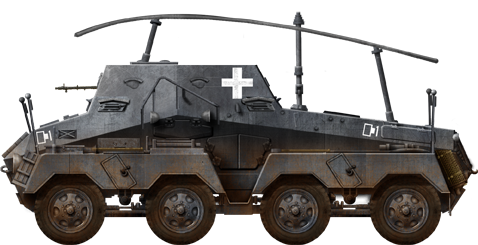
The German Army embraced the 8-wheeled vehicle concept well before any other nation, and the 8-wheeled design has gained popularity for APC/IFVs worldwide. The most successful German heavy reconnaissance armored car before the war was the Sd.Kfz.231 8-rad, which eventually soldiered on every front, replaced in 1944 by the much heavier Sd.Kfz.234. A special version was derived from the Sd.Kfz.231 as soon as 1940, the Sd.Kfz.263 (Gerat 95), also called Funkspähwagen. Although a radio-equipped version already existed, the special vehicle 263 was a tailor-made, turret-less command vehicle with a roomy compartment, map table and seating. In all, 240 were built, which served on all fronts at the head of recce units until the end of the war.
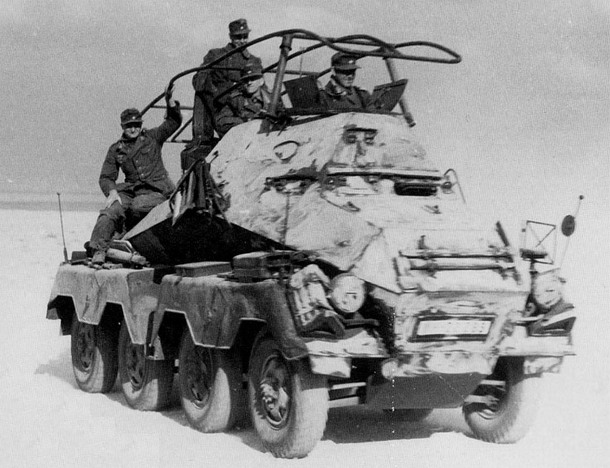
Sd.Kfz.263 with washable white paint, Russia, winter 1942
Design
The Sd.Kfz.263 was developed in parallel to the 231-232 models and shared most components with these. The complete chassis, engine, transmission, wheeltrain and drive compartments were identical to the other models, keeping an excellent mobility on rough and uneven terrain, despite being a little overweight (8.1 tonnes).The chassis had the excellent ladder-type configuration, able to withstand the stress of rough rides at high speed. The Bussing-NAG L8VG/S/36 (8-cylinder) gave 150 hp at 3000 rpm (later raised to 180 hp). It was a liquid-cooled, gasoline engine that had a 7913 cm3 (later: 8363 cm3) capacity. It gave a top speed of 85 km/h (53 mph) on roads, about 30 km/h (19 mph) off-road and a 300 km (186 miles) range. It was coupled with a 6 forward, 6 reverse transmission.
The wheelbase was 1350 + 1400 + 1350 mm. The hull was made of welded steel armor, 5 to 14.5 mm (0.2-0.57 in) thick depending on the angle (bottom to front) with well-sloped plates. In detail, 14.5 (0.57 in) mm front, 8 mm (0.31 in) sides and rear, 6 mm (0.24 in) top, and 5 mm (0.2 in) bottom. The superstructure had similar thicknesses, but was 10 mm (0.39 in) thick at the rear and the mantlet also measured 14.5 mm (0.57 in).
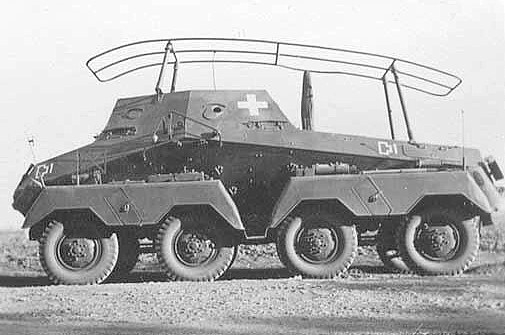
Sd.Kfz.263 in Poland, 1939
Of course, the main characteristic of the type was the absence of a turret, replaced by a tall superstructure. The armament was reduced to a simple ball-mounted 7.92 mm (0.31 in) Rheinmetall Maschinengewehr 34 (1050 rounds in store) in the front right hand side of the superstructure. In addition, the superstructure (which was 6-faceted) had five pistol ports for individual weapons, like MP 40s. This armament may seem weak, but the vehicle was not intended to see frontline action. It was meant to stay in rear areas, directing the panzer tank forces. The large bedstead frame aerial antenna and telescopic antennae were served by two men, therefore the crew was now five. Apparently, some received the front extra storage rack also present on the Sd.Kfz.231-232 series.
Active service
Deutsche Werke AG ad Schichau Werke Elbing cranked up 240 of these Panzerfunkwagen Sd.Kfz.263 (8-rad), the production lasting until January 1943, before making way to a heavier antitank version carrying 75 mm (2.95 in) guns (Sd.Kfz.233). Organically, they were attached to the Panzerdivision reconnaissance units as platoon HQ vehicles.Their long range radio equipment was vital to relay information to rear command tanks from their array of forward vehicles. These were also essential for liaison with the Luftwaffe. These vehicles were active at the time of the Sudeten crisis in 1938, but also soldiered in Poland (September 1939), and the campaign of France in May-June 1940. Panzerfunkwagens were also deployed in the Balkans (1941) and North Africa, and of course also in Russia.
Sd.Kfz.263 specifications |
|
| Dimensions | 5.8 x 2.2 x 2.9 m (19''4' x7''3' x9''6') |
| Total weight, battle ready | 8.7 tons |
| Crew | 5 (driver, commander, gunner, 2 radio operators) |
| Propulsion | Bussing 8-cyl petrol, 155 hp (115.58 kW) |
| Speed on /off road | 85/30 km/h (53/19 mph) |
| Armament | 7.92 mm (0.31 in) Maschinengewehr 34 machine gun |
| Armour | 8-15 mm (0.31-0.59 in) |
| Range | 300 km (185 mi) |
| Total production | 240 |
Sources
Sd.Kfz.263 photo galleryThe generic Sd.Kfz.230 family on Wikipedia

Sd.Kfz.263 of Nachr.Abt.37 (Mot.), 1st Panzerdivision, Poland, September 1939
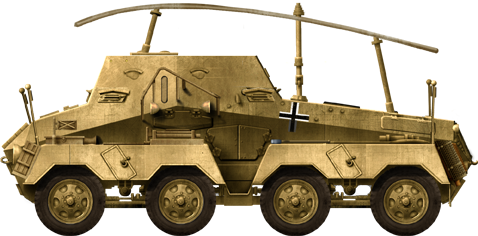
Sd.Kfz.263 Funkspähwagen, Deutsches Afrikakorps, 1941
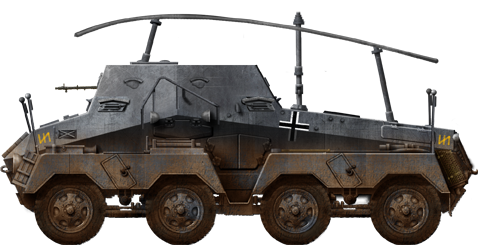
Sd.Kfz.263, 2nd Division "das Reich", Eastern Front, 1941

Sd.Kfz.263, 79th signal battalion (mot.) 4th Panzerdivision, Bielorussia 1943.
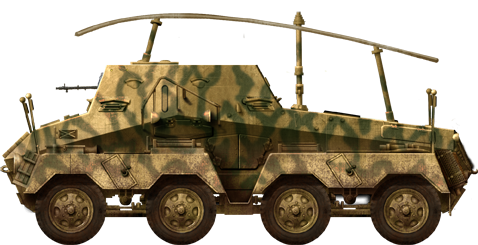
Sd.Kfz.263 "Rona", Warsaw, 1944.
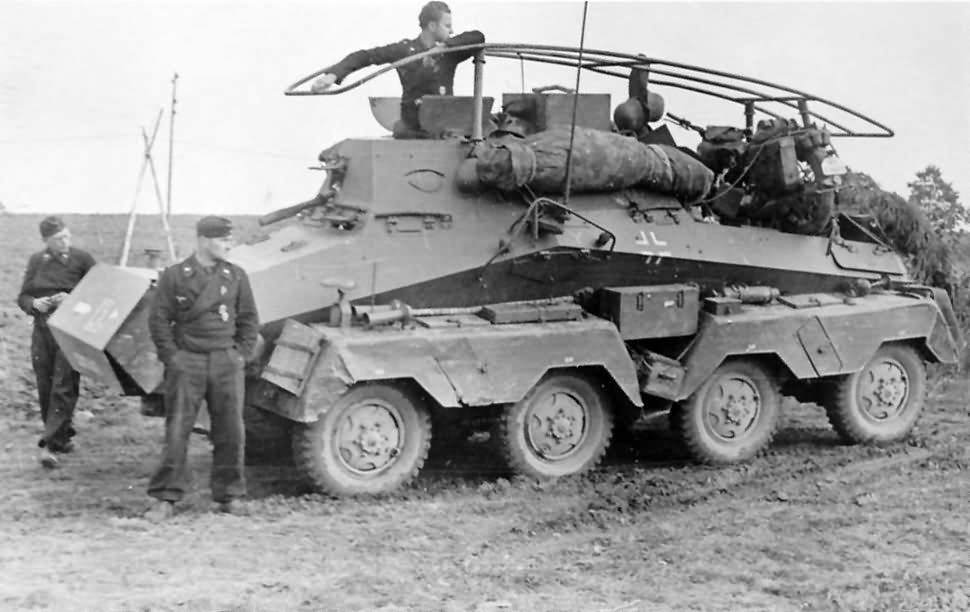
Sd.Kfz.263 with front storage - Credits: World War Photos
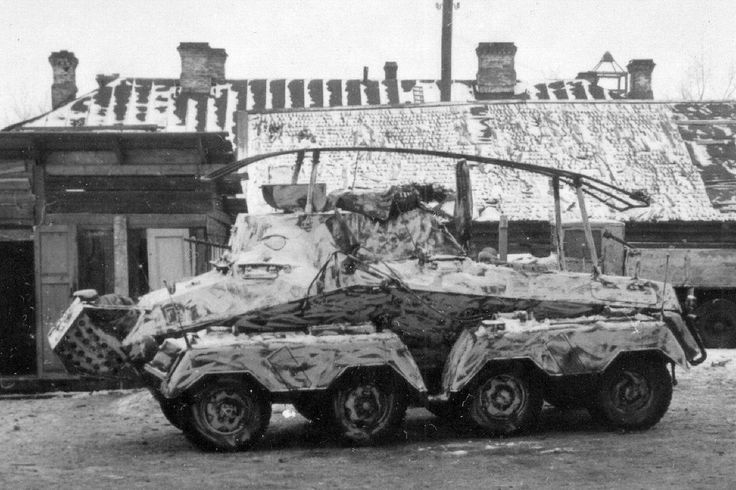
Sd.Kfz.263 with white washable paint, Russia, winter 1942

Germans Tanks of ww2

WW2 Tanks




























WW2 tanks posters

All Tiger tanks liveries.

Panther liveries and variants

WW2 Armour - All tanks











Tanks aces and single tanks series

Find more there

Museums, Movies, Books & Games
The Tanks and Armor in pop culture
Tanks and armored vehicles in general are only really grasped when seen first person: The mass, the scale, it's all there. Explore also the way tanks were covered in the movie industry, in books and in video games.Movies:
Best tanks movie on warhistoryonline.com
On imdb.com
On bestsimilar.com/
miltours.com
liveabout.com/
watchmojo.com
Video Games:
pcgamesn.com
historyhit.com
levvvel.com
vg247.com/best-tank-games
mmobomb.com/
alienwarearena.com

